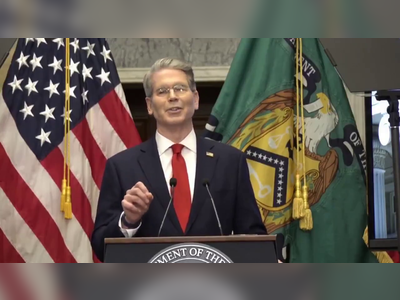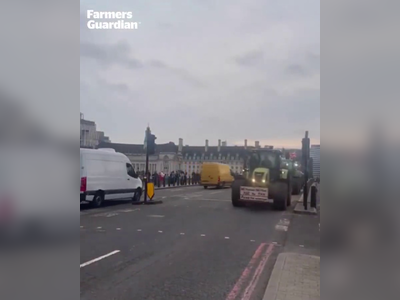
Inside London's new $25B 'Super Tube'
Until now, you'd probably have missed it, thanks to London's largely Victorian infrastructure. However, from possibly May this year, traveling across the UK capital will be revolutionized by a new, largely underground high-speed railway connecting east to west.
When fully opened, the new Elizabeth Line -- better known as Crossrail -- will make that Canary Wharf to Heathrow journey just 38 minutes. That's slashing it from at least an hour on the current underground system or about double that in a taxi, even in normal levels of traffic.
New trains capable of carrying 1,500 passengers at up to 90mph -- 450 of whom will be lucky enough to get a seat -- will speed beneath the streets of central London, serving Docklands and the City of London financial districts, the shopping and theater hub of the West End and Heathrow, as well as commuter belt towns in Essex, Kent and the Thames Valley on either side of the city.
The 62-mile network is built around a core consisting of 26 miles of brand-new tunnels through central London, burrowed with incredible precision under one of the most densely developed cities in the world.
The twin tunnels, 20 feet in diameter and up to 40 meters (130 feet) deep, weave around building foundations, London Underground tunnels and countless other structures and utilities. They took three years to dig between 2012 and 2015, using eight 1,000-ton tunnel boring machines (TBMs).
At the height of construction, Crossrail was Europe's biggest engineering project.
May's launch is a soft one, with up to 12 trains per hour running in each direction through the London tunnels between Abbey Wood, in southeast London, and Paddington, one of the city's main train stations.
That frequency will double with the introduction of through services from Abbey Wood to Reading and Heathrow -- the branch that includes Canary Wharf -- and the addition of services from Shenfield in Essex, northeast of the capital, to Paddington, from fall 2022.
Crossrail's full schedule will come no later than May 2023, when up to to 24 trains per hour will run in each direction across the whole network. It looks set to transform travel across the UK capital.
It's been a long time coming. Approved in 2007 for a 2018 opening, with work commencing in 2009, Crossrail is four years late and around £4 billion ($5.28 billion) over budget, with the project coming in at £18.9 billion ($25 billion). London Mayor Sadiq Khan declared himself "angry and frustrated" about the mismanagement situation as far back as 2018.
However, by bringing another 1.5 million people within 45 minutes of central London, and transforming travel in the capital for Londoners and visitors alike, those behind Crossrail must be hoping that once the service launches, all will be forgiven.
A 'massive morale boost'
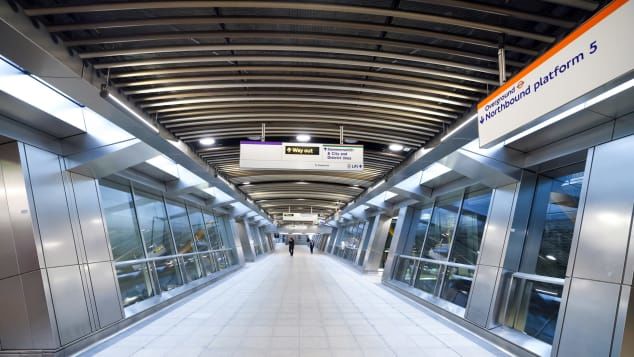 The project is London's most hi-tech engineering work yet.
The project is London's most hi-tech engineering work yet.
So what exactly is Crossrail? Linking Shenfield and Abbey Wood in the east with Heathrow and Reading to the west of the capital, Crossrail binds together existing commuter railways.
In doing so, it'll accelerate cross-city travel, provide a wealth of new journey opportunities, and relieve overcrowded existing lines on the London
Underground -- the capital's 'Tube' network -- particularly the often-crushed Central Line.
When fully operational, it will increase London's rail capacity by 10% -- the largest single expansion of the city's transport network in more than 70 years.
Around 200 million passengers a year were expected to use Crossrail when it is fully open, although those forecasts were made pre-pandemic, and have now been thrown into doubt by rapidly changing work patterns.
London's Transport Commissioner, Andy Byford, said at a February 2022 media preview: "Crossrail will be a massive fillip to London's morale and confidence when it opens. When people arrive on day one they will be blown away by the scale and how quiet and smooth the train ride is."
The sheer scale of the project is hard to comprehend, so let's take that journey from Canary Wharf -- east of the city center, in the Docklands district -- to Heathrow Airport, west of London, to get a flavor of the impact Crossrail is set to make.
Monumental developments, cavernous tunnels
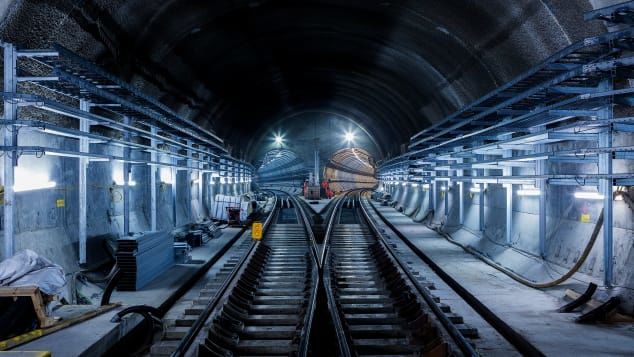 Crossrail was Europe's largest engineering project when works were at their height.
Crossrail was Europe's largest engineering project when works were at their height.
Canary Wharf is one of 10 new Crossrail hubs designed to be more than just railway stations. The entrance is a five-story development sitting on an old quayside, housing shops, restaurants and even a rooftop garden. It's a far cry from traditional Tube entrances, which are little more than a staircase leading you down from the street.
Touch in with your top-uppable Oyster Card and descend the monumental escalators to the cavernous tunnels nearly 70 feet below ground. As soon as you reach the platforms it's clear that this is not just another Tube line. Compared to the cramped tunnels and Lilliputian trains of the world's oldest underground metro system, the Elizabeth Line is on a scale and magnitude never seen in London.
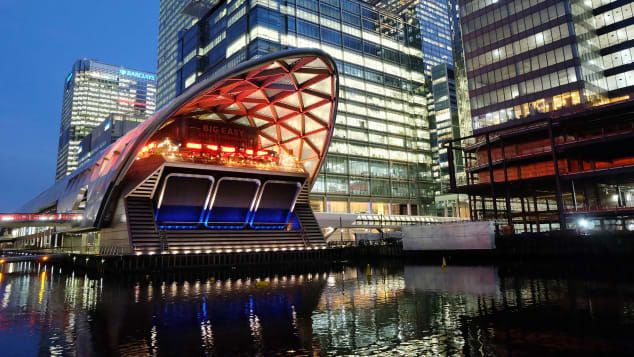 Canary Wharf isn't your average London Underground station.
Canary Wharf isn't your average London Underground station.
Spacious tunnels lead to airy 600-foot platforms designed to accommodate hundreds of waiting passengers, with glass screens at the edge of the tracks, eliminating the risk of anyone falling under a train.
Step-free access is provided from street to train at all Crossrail stations, making it accessible to all travelers, regardless of their mobility.
Suddenly, our blue and gray train whirrs in almost silently from the east, Two sets of doors open in unison and we venture inside, taking one of the colorful bench seats, upholstered in the Elizabeth Line's signature purple, blue and gray, running along the length of the nine-car train. The wide, open interior of the train with full-width, walk-through connections between cars is a world away from traditional London tube trains. A few seconds later, the doors slide shut and we accelerate away towards our next stop.
Stops under the city
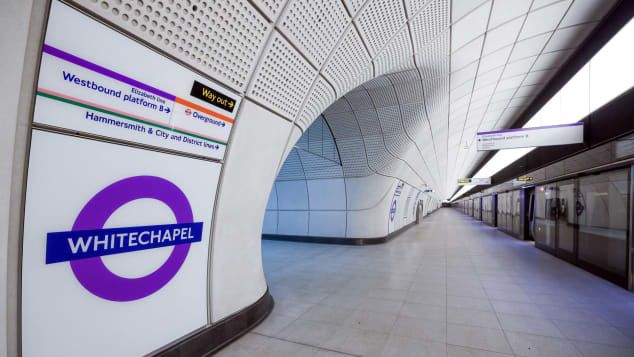 Whitechapel will be one of the Crossrail hubs.
Whitechapel will be one of the Crossrail hubs.
Whitechapel, close to London's creative hubs in Shoreditch and Hoxton, is another major transport interchange, where key London Underground, Overground and bus routes fan out across north, east and southeast London. Weaving Crossrail into an already crowded space beneath the existing station proved to be one of the project's greatest challenges.
Continuing west, we stop at Liverpool Street in the heart of the City of London financial district. Here, layers of history had to be peeled away before construction work could begin. Almost 4,000 skeletons from the burial ground of Bedlam, a notorious psychiatric hospital, were uncovered by archaeologists, as well as thousands of artefacts dating back to Roman times.
Next is Farringdon -- home to countless major corporations, law firms and media outlets, not to mention the diamond district of Hatton Garden and the brutalist Barbican Centre. This is where Crossrail's east-west tunnels meet London Underground's busy Circle, Metropolitan and Hammersmith & City lines, as well as the north-south route run by Thameslink trains.
When Crossrail launches, Farringdon will likely become London's busiest rail station and one of the UK's most important transport hubs, thanks to its interchange with Thameslink. Thameslink trains -- of which there are up to 24 per hour -- already link central London to Gatwick and Luton airports,
Cambridge, and Brighton on England's south coast.
Farringdon has been preparing for its moment in the spotlight. To cope with the massive uplift in footfall, the station has been completely redeveloped over the last decade, including new entrance halls with a distinctive diamond pattern roof and greatly expanded passenger facilities, new entrances and additional pedestrian tunnels between lines.
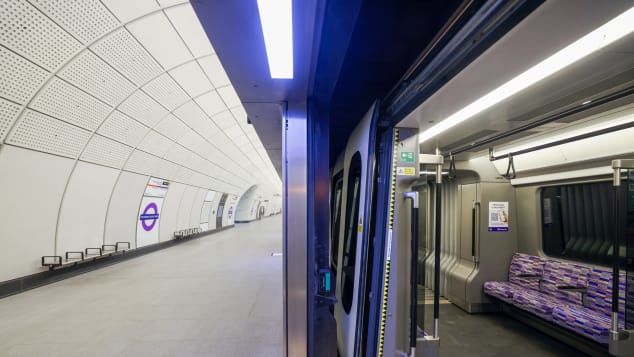 Tottenham Court Road station has been burrowed below the capital.
Tottenham Court Road station has been burrowed below the capital.
Heading west is Tottenham Court Road, where the new railway is delicately threaded between the tunnels and escalators of the existing London Underground station; in one spot, a little over two feet separates the Crossrail and Northern Line tunnels.
The area between Farringdon, Tottenham Court Road and Bond Street, the next stop, is London's busiest shopping and entertainment district. Beneath the theaters and recording studios of Soho, Crossrail's engineers had to develop special "floating slab'"tracks to alleviate the impact of passing trains. Bespoke track slabs are mounted on thousands of springs to minimise the transmission of noise and vibration into the surrounding ground.
Rolling silently through, we arrive at at Paddington, London's main station for rail routes heading west. Its stunning new low-level Crossrail platforms are cut into a deep trough beside steam-age engineer Isambard Kingdom Brunel's 1854 "railway cathedral." A 300-foot clear opening with a steel and glass canopy allows natural daylight to flood into the subterranean space.
Out above ground
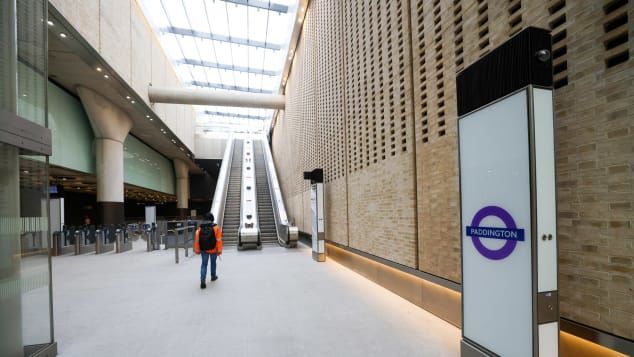 Paddington's Crossrail station is sunk below the famous 19th-century railway station.
Paddington's Crossrail station is sunk below the famous 19th-century railway station.
Paddington marks the western end of the new Crossrail tracks. Continuing west and emerging above ground, the trains will switch to the tracks of the old Great Western Railway (shared with existing National Rail trains), for a sprint via the suburbs of Acton, Ealing Broadway and Southall before entering the tunnels below Heathrow.
Thirteen stops and 38 minutes after leaving Canary Wharf, we slide into the station for Heathrow Terminals 2 and 3, leaving plenty of time for a spot of duty-free shopping before we board our flight.
Crossrail carries on, however. In the west, the service will extend past Heathrow to commuter towns Slough and Reading, while east of Canary Wharf, the line will continue through the busy commuter stations of Essex and provide a fast new link to Abbey Wood.
Improvements for all
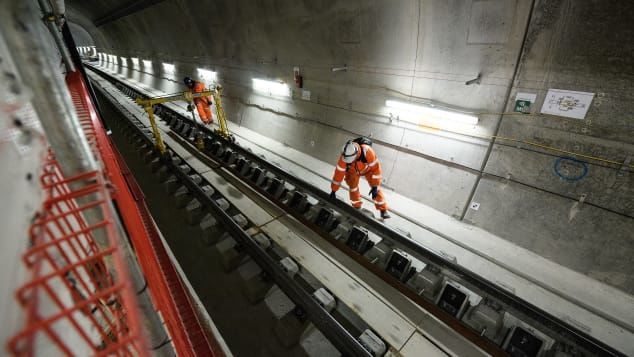 More than $1.5bn has been spent on upgrading existing stations and tracks.
More than $1.5bn has been spent on upgrading existing stations and tracks.
In preparation for Crossrail, more than £1 billion ($1.5 billion) has been spent to upgrade 31 existing stations and tracks. Upgrade work had to take place with a minimum of disruption to some of Britain's busiest commuter routes.
Extended platforms, improved facilities and step-free access will transform journeys for millions of passengers.
From 2026, Crossrail trains will also call at a new £1.67 billion ($2.2 billion) transport interchange at Old Oak Common, west of Paddington. From there, fast connections to the Midlands, north of England and Scotland via under-construction High Speed 2 (HS2) will be possible when the 220 mph railway opens in phases between 2029 and 2040.
'It has to be flawless'
Crossrail is a project of staggering complexity. The scale of its civil engineering would be impressive enough, but the huge team of planners, technicians and engineers also have to seamlessly integrate the new line into two quite different existing railways dating from the 19th century -- without disrupting their intensive services.
The fleet of 70 purpose-built trains have to run safely and reliably on three different signaling systems, requiring bespoke software and a lengthy test phase.
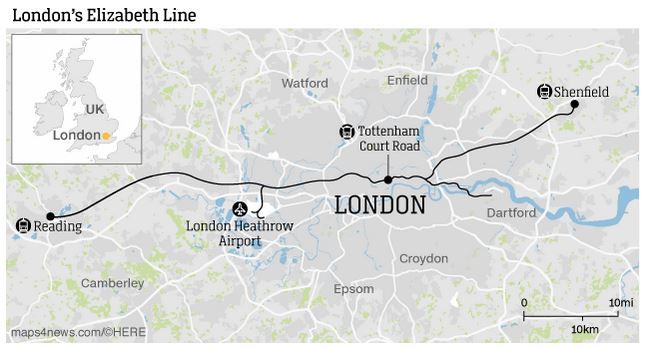
Behind the scenes, dozens of other systems control the line's power, lighting, airflow, CCTV, communication and safety systems, passenger information, hundreds of elevators and escalators, and much more.
The network has already undergone many months of testing and "shadow running," including live testing with volunteers and emergency evacuation drills.
Making myriad systems function together reliably is at the root of the delays and cost overruns. Howard Smith, director of operations at Transport for London, admitted earlier this year: "Bringing signaling systems, communications systems and the software that controls the signaling and the trains together --- that's the bit that has taken longer to finish than planned."
Byford added at a press preview in February: "It has to be flawless. Better to take an extra couple of weeks than to have people loving the surroundings but disappointed by the reliability. During testing, some days it is 98% on time, but some days have been 80% and that's not good enough."
A rocky past
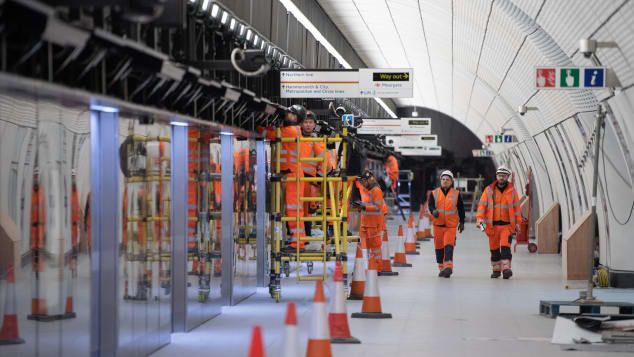 The project has overrun in both time and budget.
The project has overrun in both time and budget.
It hasn't been an extra couple of weeks, however. Crossrail was initially scheduled to launch in 2018.
Having commissioned an independent report into the project's failings, London Mayor Sadiq Khan -- who took office in 2016, replacing now-Prime Minister Boris Johnson -- reacted furiously when documents released in December 2018 showed the project had been mismanaged for more than five years.
"I remain deeply angry and frustrated at the delays and cost overrun," said Khan at the time.
It got worse. Back in August 2018, Crossrail bosses had told Khan that they were still working to a launch date of December that year. Just three weeks later, they pushed it back a full year.
Then in April 2019, they said they needed at least another 18 months -- a deadline that was subsequently extended into 2022.
The UK's National Audit Office blamed an "unrealistic" schedule for the delays in a May 2019 report.
That poisonous combination of cost overruns, loss of confidence, changing political priorities and public resistance to the disruption caused by civil engineering mega-projects led to the shelving of the proposed "Crossrail 2" linking northeast London with the southwestern suburbs. It could be many decades before the city matches the wider network of fast, high-capacity underground railways enjoyed by cities such as Paris and Hong Kong.
What's more, ambitious ridership and revenue forecasts made before the shock of the pandemic now look unlikely to be met for many years, placing enormous pressure on the already strained finances of Transport for London, the umbrella organization that runs the city's underground, trains and buses.
A new London icon
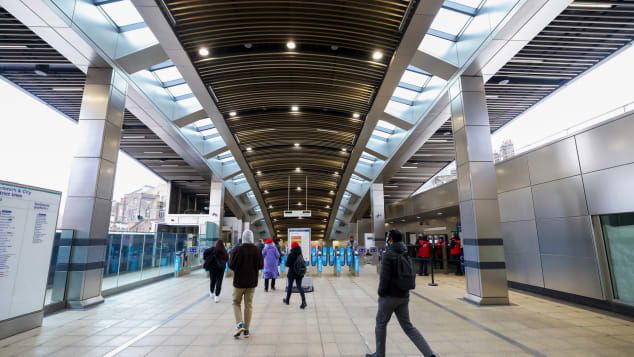 Fans hope the railway line will become a new London icon.
Fans hope the railway line will become a new London icon.
Despite its controversy, public opinion appears relatively favorable. Christian Wolmar, rail journalist and author of "The Story of Crossrail," says: "Many people, myself included, are sceptical of mega-projects.
"There are legitimate criticisms to be leveled at Crossrail, and some awkward questions to ask. The original budget was evidently unrealistic and one could also argue that London has been very fortunate to acquire such a splendid new railway when so little is spent on transport in the rest of the UK regions in comparison with the capital.
"Despite the disruption caused in some sensitive areas such as the City and Mayfair, much of the work drew little criticism. In a way, the most remarkable aspect of the Crossrail project has been its invisibility."
Wolmar adds: "Despite the caveats, there is no doubt that Crossrail is an amazing scheme, grand in conception and set to become as iconic for London as its red buses, the Tube or Nelson's Column."
When it finally opens, Crossrail will form a lasting tribute to the thousands of engineers, designers, tunnellers and technicians who have made it a reality over the last decade. In the year of Queen Elizabeth II's Platinum Jubilee, the remarkable new railway carrying her name can finally start to deliver its promises to Londoners.






